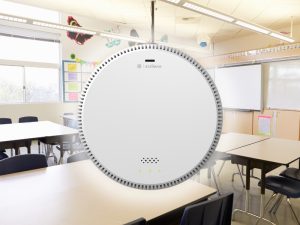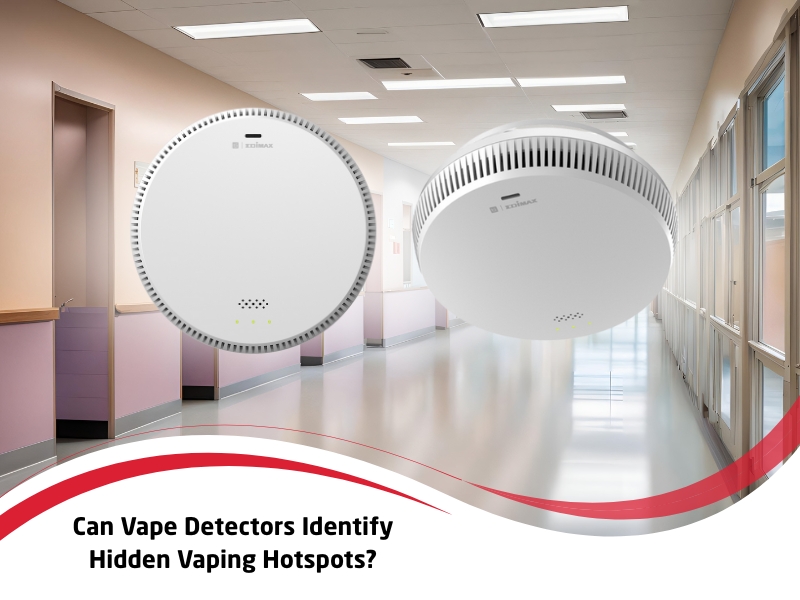Vaping has become a significant concern in many environments, especially in schools, hospitals, and other sensitive settings. With increasing instances of vaping among students, it’s essential to explore how modern technology can help tackle this issue. One such solution is vape detectors, which can potentially identify hidden vaping hotspots. This guide explores the functionality of vape detectors and discusses whether they can successfully detect hidden vaping spots in schools and similar spaces.
What are vape hotspots, and why are they a problem in schools?
Vape hotspots refer to areas within a facility—especially schools—where vaping is frequent and often goes unnoticed. These spots are typically hidden and difficult to monitor using traditional methods. Vaping is a growing concern because:
- Health risks: Although vaping is often marketed as a safer alternative to smoking, understanding the potential health risks of vaping and e-cigarettes remains crucial, especially concerning the impact on young, developing lungs.
- Disruption: Students vaping in areas where it’s not allowed can disrupt the learning environment.
- Fire hazard: E-cigarettes contain lithium-ion batteries that can overheat and cause fires if mishandled.
- Difficulty in enforcement: Vaping can be discreet, making it harder for staff to spot offenders.
Vape hotspots usually include bathrooms, stairwells, and secluded areas of schools where students can vape without being detected by teachers or security cameras.
How do vape detectors identify hidden vaping hotspots?
Vape detectors work by monitoring the air for the presence of specific chemicals found in e-cigarette vapour. Here’s how they typically function:
- Chemical detection: Vape detectors are equipped with advanced sensors to identify chemicals commonly found in e-cigarette vapour. These chemicals include:
- Nicotine: The primary active ingredient in most e-cigarettes.
- Propylene Glycol: A substance used to create the vapour in e-cigarettes.
- Vegetable Glycerin: Another base substance used in the production of e-cigarette vapour.
- Heat sensors: Some vape detectors come with integrated heat sensors designed to pick up the heat signature generated by vaping. When a vape is used, it produces a spike in temperature, which is detectable by these sensors. This allows the detector to identify when vaping is occurring, even if the vapour itself is not immediately visible.
- Particulate matter: Vaping produces fine particles that are released into the air. Certain types of particulate matter sensors can detect these particles. These sensors monitor the air for small particles that are common in vaping vapour, such as:
- Nicotine particles: These can linger in the air after a puff.
- Vapour mist: Created by the heating process during vaping.
- Remote monitoring: Modern vape detectors are often connected to a central system that provides real-time monitoring and alerts. This system allows school administrators or facility managers to track vaping activity. Once a vaping event is detected, an immediate alert is sent to the responsible parties, which means intervention can happen quickly.
Are vape detectors effective in identifying hotspots in real time?
Yes, vape detectors are quite effective in identifying vaping hotspots in real time, particularly in areas that are hard to monitor visually. The real-time alerts enable quick action from school staff, making it easier to address vaping as it happens.
- Instant alerts: Vape detectors send instant alerts to staff or administrators when they detect vaping. This allows for immediate intervention, preventing further incidents.
- Precise location tracking: With advanced systems, vape detectors can pinpoint the exact location of vaping, ensuring that staff can focus their attention where it’s most needed.
- Remote monitoring: Many systems allow remote monitoring, meaning administrators can track potential hotspots without being physically present. This is especially useful in large or spread-out schools.
- Data analysis for predictive insights: The potential of air quality monitors to analyse data and predict pollution trends further enhances vape detection. By reviewing past data, schools can identify recurring hotspots and take proactive steps before vaping incidents occur.

While vape detectors are highly effective, it’s important to note that they can’t replace human supervision. They are best used as an additional layer of security to complement regular monitoring and intervention efforts.
Which areas in schools are most likely to be hotspots for vaping?
Certain secluded or unsupervised areas in schools are more likely to become vaping hotspots. Given the broader importance of regular air quality checks in classrooms, continuous monitoring is crucial in these key areas.
Here’s a breakdown of vaping hotspots in schools:
| Area | Reasons for Popularity | Vape Detection Strategy |
| Bathrooms | Privacy, lack of supervision | High sensor sensitivity in and around bathrooms |
| Stairwells | Secluded, less frequent traffic | Heat sensors to detect elevated temperatures |
| Empty Classrooms | Secluded, unnoticed | Motion and air quality sensors for detection |
| Locker Rooms | Privacy and low supervision | Position detectors near entrances to monitor activity |
By strategically placing vape detectors in and around these hotspots, schools can significantly reduce the risk of vaping going undetected.
Can vape detectors help prevent vaping in schools?
Vape detectors can play a significant role in curbing vaping in schools, though they are just one part of a broader strategy. Here’s how they can help:

- Prevention through awareness: Knowing that vape detectors are in place may deter students from vaping.
- Quick response: Real-time alerts enable immediate action, stopping vaping incidents before they escalate.
- Educational opportunity: Vape detectors can also help schools raise awareness about the health risks of vaping. When students are caught, it opens the door for conversations about the dangers of e-cigarettes.
- Policy enforcement: Vape detectors assist in enforcing school policies against vaping by providing concrete evidence of infractions.
Exploring the benefits of using air quality detectors for schools can further enhance to combat vaping. Alongside vape detectors, schools should implement comprehensive strategies, including:
- Education programmes: Informing students about the health risks and legal implications of vaping.
- Parental involvement: Keeping parents informed about current vaping trends and prevention strategies.
- Improved supervision: Ensuring areas such as bathrooms and locker rooms are frequently checked by staff.
Conclusion: Protect your school with Edimax Air Quality Detectors
Vape detectors are effective tools for identifying hidden vaping hotspots in schools, hospitals, and other sensitive environments. They can detect vape-related chemicals, temperature changes, and particulates, offering real-time monitoring and alerts and empowering school administrators to take immediate action.
If you’re looking to improve your school’s air quality monitoring system and create a vape-free environment, discover how Edimax can support your air quality needs.
